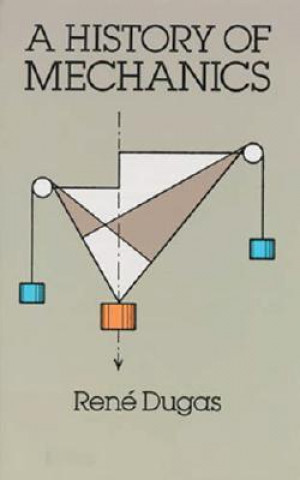
Kód: 02569608
History of Mechanics
Autor René Dugas
PREFACE PART ONE THE ORIGINS CHAPTER ONE. - HELLENIC SCIENCE 1. Aristotelian mechanics 2. The Statics of Archimedes CHAPTER II. - ALEXANDRIAN SOURCES AND ARABIC MANUSCRIPTS 1. "The "mechanics" of Hero of Alexandria" 2. ... celý popis
- Jazyk:
 Angličtina
Angličtina - Väzba: Brožovaná
- Počet strán: 688
Nakladateľ: Dover Publications Inc., 2011
- Viac informácií o knihe

27.80 €
Bežne: 27.81 €
Ušetríte 0.01 €
Dostupnosť:
50 % šanca Máme informáciu, že by titul mohol byť dostupný. Na základe vašej objednávky sa ho pokúsime do 6 týždňov zabezpečiť.
Máme informáciu, že by titul mohol byť dostupný. Na základe vašej objednávky sa ho pokúsime do 6 týždňov zabezpečiť.Prehľadáme celý svet
Mohlo by sa vám tiež páčiť
-
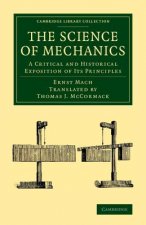
Science of Mechanics
87.15 € -

Popular Mechanics How to Fix Anything
16.98 € -19 % -

On Repeat
81.39 € -

Science of Cooking
22.34 € -28 % -

Heart Lines
15.16 € -16 % -

Art Museum Redefined
125.48 € -

Collected Mathematical Papers of Arthur Cayley, Volume 2
49.13 € -

Archiv for Pharmaci Og Technisk Chemi Med Deres Grundvidenskaber, Volume 18
48.02 € -
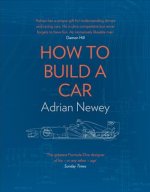
How to Build a Car
32.45 € -23 % -

Creature from Jekyll Island
51.16 € -

Imperial Twilight
19.51 € -8 % -
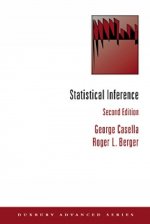
Statistical Inference
101.21 € -

Chain of Gold (1) (The Last Hours)
20.11 € -22 % -

Pivotal Certified Professional Core Spring 5 Developer Exam
84.42 € -15 % -

Blockchain Bubble or Revolution: The Future of Bitcoin, Blockchains, and Cryptocurrencies
26.69 € -

Do you want to play? Truth or Dare - Sex Game Date Night: Perfect Valentine's day gift for him or her - Sexy game for consenting adults!
12.43 € -

Skin of the Sea
9.49 € -20 % -

Lonely Planet Jordan
18.80 € -17 % -

Leap of Faith
12.43 € -13 % -

Queen - The Platinum Collection: Complete Scores Collectors Edition
92.61 € -7 % -

The language of fashion
74.51 € -

Kahlo
14.85 € -2 % -

Signs of Love: Destiny Date
9.39 € -
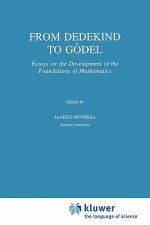
From Dedekind to Goedel
273.72 € -
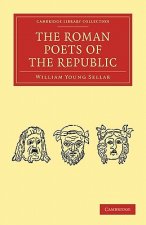
Roman Poets of the Republic
69.36 € -

Lords of Waterdeep
55.40 € -

Roman Poets of the Augustan Age
33.36 € -
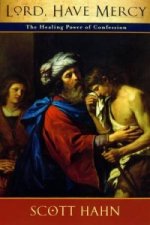
Lord, Have Mercy
16.07 € -13 % -

Lovely Layla Series: Layla Gets Drunk, Kissed, Blackmailed, and Finally, Gets it in the End
27.19 € -
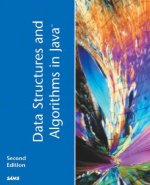
Data Structures and Algorithms in Java
62.68 € -

Little Voices - Classic Pops
13.44 € -14 % -
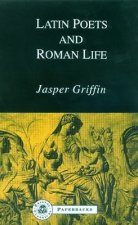
Latin Poets and Roman Life
50.65 € -

The 33 Strategies Of War
19.20 € -20 % -

Mobile Suit Gundam: The Origin Volume 12
26.89 € -12 % -

History of Strategy
25.27 € -

Glorious Church in God's Divine Restoration Program
15.16 € -

Intermediate Greek-English Lexicon
34.27 € -

Applied Informatics and Communication, Part V
137.81 € -

Llewellyn's Complete Formulary of Magical Oils
26.18 € -15 % -

Phantoms in the Brain
14.25 € -23 % -

Ciastolina Domowa plastelina
2.21 € -10 % -

Anlageverhalten von Jungakademikern bei Aktien und Aktienfonds
236.91 € -

Valses
15.26 € -

Hitlers Parteigenossen
48.93 € -

English G Lighthouse - Allgemeine Ausgabe - Band 3: 7. Schuljahr
34.47 € -

Coloriages mystères tome 5
21.02 € -

MINNA NO NIHONGO DEB. 2 - TRADUCTION ET NOTES GRAMMATICALES (EN FRANÇAIS) (2E ED.)
43.27 € -

1318
47.82 € -

Pravdomluvní lžou jenom občas
8.69 € -4 %
Darujte túto knihu ešte dnes
- Objednajte knihu a vyberte Zaslať ako darček.
- Obratom obdržíte darovací poukaz na knihu, ktorý môžete ihneď odovzdať obdarovanému.
- Knihu zašleme na adresu obdarovaného, o nič sa nestaráte.
Informovať o naskladnení knihy
Zadajte do formulára e-mailovú adresu a akonáhle knihu naskladníme, zašleme vám o tom správu. Postrážime všetko za vás.
Viac informácií o knihe History of Mechanics
Nákupom získate 70 bodov
 Anotácia knihy
Anotácia knihy
PREFACE PART ONE THE ORIGINS CHAPTER ONE. - HELLENIC SCIENCE 1. Aristotelian mechanics 2. The Statics of Archimedes CHAPTER II. - ALEXANDRIAN SOURCES AND ARABIC MANUSCRIPTS 1. "The "mechanics" of Hero of Alexandria" 2. Pappus' theories of the inclined plane and of the centre of gravity 3. The fragments attributed to Euclid in arabic writings 4. The book of Charistion CHAPTER III. - THE XIIIth CENTURY. THE SCHOOL OF JORDANUS 1. "Jordanus of Nemore and "gravitas secundum situm" 2. "The anonymous author of "Liber Jordani de ratione ponderis." The angular lever. The inclined plane" CHAPTER IV. - THE XIVth CENTURY. THE SCHOOLS OF BURIDAN AND ALBERT OF SAXONY. NICOLE ORESME AND THE OXFORD SCHOOL 1. "The doctrine of "impetus" (John Buridan)" 2. The sphericity of the earth and the oceans-Albert of Saxony and the aristotelian tradition 3. Albert of Saxony's theory of centre of gravity 4. Albert of Saxony's kinematics. The acceleration of falling bodies 5. The discussion of action at a distance 6. Nicole Oresme-a disciple of Buridan 7. Oresme's rule in kinematics. (Uniformly accelerted motion.) 8. Oresme as a predecessor of Copernicus 9. The Oxford School 10. The tradition of Albert of Saxony and of Buridan CHAPTER V. - XVth AND XVIth CENTURIES. THE ITALIAN SCHOOL. BLASIUS OF PARMA. THE OXFORD TRADITION. NICHOLAS OF CUES AND LEONARDO DA VINCI. NICHOLAS COPERNICUS. THE ITALIAN AND PARISIAN SCHOOLMEN OF THE XVIth CENTURY. DOMINIC SOTO AND THE FALL OF BODIES 1. Blasius of Parma and his treatise on weights 2. The Italian tradition of Nicole Oresme and the Oxford School 3. "Nicholas of Cues (1404-1464) and the doctrine of "impetus impressus" 4. Leonardo da Vinci's contribution to mechanics 5. Nicholas Copernicus (1472-1543). His system of the world and his ideas on attraction 6. John Fernel (1497-1558) and the figure of the earth 7. Italian scholasticism in the XVIth century 8. Parisian scholasticism in the XVIth century 9. The attack of the humanists 10. Dominic de Soto (1494-1560) and the laws of falling bodies CHAPTER VI. - XVIth CENTURY (continued) THE ITALIAN SCHOOL OF NICHOLAS TARTAGLIA AND BERNARDINO BALDI 1. Nicholas Tartaglia 2. Jerome Cardan (1501-1576) 3. Julius-Caesar Scaliger and Buridan's doctrine 4. Bento Pereira (1535-1610). The classical reaction 5. "The "Mechanicorum Liber" of Guido Ubaldo (1545-1607)" 6. J.-B. Villalpand (1552-1608) and the polygon of sustentation 7. "J.-B. Benedetti (1530-1590). Statics. Figure of the earth. Doctrine of "impetus" 8. Giordano Bruno (1548-1600) and the composition of motion 9. "Bernardino Baldi (1553-1617). Statics and gravity "exviolentia" CHAPTER VII. - XVIth CENTURY (continued). XVIIth CENTURY. TYCHO-BRAHE AND KEPLER 1. The system due to Tycho-Brahe (1546-1601) 2. Kepler (1571-1631). The general chracter of his contribution 3. The origin of the law of areas 4. Origin of the law of the ellipticity of planetary trajectories 5. Kepler's third law 6. Kepler and the concept of inertia 7. Kepler and the doctrine of attraction PART II THE FORMATION OF CLASSICAL MECHANICS CHAPTER I. - STEVIN'S STATICS. SOLOMON OF CAUX 1. The statics of Stevin (1548-1620) 2. Stevin and the principle of virtual work 3. Stevin's hydrostatics 4. Solomon of Caux (1576-1630) and the concept of work CHAPTER II. - GALILEO AND TORRICELLI 1. Galileo's statics 2. Galileo and the fall of bodies 3. Galileo and the motion of projectiles 4. Galileo and the hydrostatics 5. Galileo and the Copernican system 6. Torricelli's principle 7. Torricelli and the motion of projectiles 8. Torricelli's experiment 9. Torricelli's law flow through an orifice CHAPTER III. - MERSENNE (1588-1648) AS AN INTERNATIONAL GO-BETWEEN IN MECHANICS. ROBERVAL (1602-1675) 1. The arrival of foreign theories in France. The part played by Mersenne 2. Roberval and compound motion 3. Roberval's treatise on mechanics 4. Roberval and the law of composition of forces CHAPTER IV. - DESCARTES' MECHANICS. PASCAL'S HYDROSTATICS 1. Descartes' statics 2. Descartes and the fall of heavy bodies 3. Descartes and the conservation of quantities of motion 4. Descartes and the impact of bodies 5. The discussion between Descartes and Roberval on the centre of agitation 6. The quarrel about geostatics 7. Pascal's hydrostatics "CHAPTER V. - THE LAWS OF IMPACT (WALLIS, WREN, HUYGHENS, MARIOTTE). THE MECHANICS OF HUYGHENS (1629-1697)" 1. The mechanics of Wallis (1616-1703) 2. Wren (1632-1723) and the laws of elastic impact 3. Huyghens (1629-1697) and the laws of impact 4. The plan of Huyghens' fundamental treatise 5. Huyghens and the fall of bodies 6. The isochronism of the cycloidal pendulum 7. The theory of the centre of oscillation 8. The theory of centrifugal force 9. Huyghens and the principle of relativity 10. Mariotte and the laws of impact CHAPTER VI. - NEWTON (1642-1727) 1. The newtonian method 2. The newtonian concepts 3. The newtonian laws of motion 4. Newton and the dynamical law of composition of forces 5. The motion of a point under the action of a central force 6. Newton's explanation of the motion of the planets 7. The universal attraction CHAPTER VII. - LEIBNIZ AND LIVING FORCE 1. "The "vis motrix" in the sense of Leibniz" 2. Leibniz and the laws of impact 3. Living and dead forces CHAPTER VIII. - THE FRENCH-ITALIAN SCHOOL OF ZACCHI AND VARIGNON 1. Zacchi and Saccheri. Lamy and the composition of forces 2. The statics of Varignon (1654-1722) 3. Varignon and Torricelli's law of flow PART III THE ORGANISATION AND DEVELOPMENT OF THE PRINCIPLES OF CLASSICAL MECHANICS IN THE XVIIIth CENTURY CHAPTER I. - JEAN BERNOULLI AND THE PRINCIPLE OF VIRTUAL WORK (1717). DANIEL BERNOULLI AND THE COMPOSITION OF FORCES (1726) 1. Jean Bernoulli and the principle of virtual work 2. Daniel Bernoulli and the composition of forces CHAPTER II. - THE CONTROVERSY ABOUT LIVING FORCES CHAPTER III. - EULER AND THE MECHANICS OF A PARTICLE (1736) CHAPTER IV. - JACQUES BERNOULLI AND THE CENTRE OF OSCILLATION (1703). D'ALEMBERT'S TREATISE ON DYNAMICS (1743) 1. Jacques Bernoulli and the centre of oscillation 2. The introductory argument of d'Alembert's Treatise on dynamics 3. D'Alembert and the concept of accelerating force 4. D'Alembert's principle 5. D'Alembert's solution of the problem of the centre of oscillation 6. The priority of Herman and Euler in the matter of d'Alembert's principle 7. D'Alembert and the laws of impact 8. D'Alembert and the principle of living forces CHAPTER V. - THE PRINCIPLE OF LEAST ACTION 1. Return to Fermat 2. Cartesian objections to Fermat's principle 3. "Leibniz and the path of "least resistance" for light" 4. Maupertuis' law of rest 5. The principle of least action in Maupertuis' sense (1744) 6. The application of the principle of least action to the direct impact of two bodies 7. The principle of least action in Maupertuis' work 8. D'Alembert's condemnation of final causes 9. The polemic on the principle of least action 10. Euler's judgment on the controversy on least action 11. Euler and the law of the extremum of ? mvds 12. Final remark CHAPTER VI. - EULER AND THE MECHANICS OF SOLID BODIES (1760) CHAPTER VII. -CLAIRAUT AND THE FUNDAMENTAL LAW OF HYDROSTATICS 1. Clairaut's principle of the duct 2. The condition to be satisfied by the law of gravity to assure the conservation of the shape of a rotating fluid mass 3. CHAPTER VIII. - DANIEL BERNOULLI'S HYDRODYNAMICS. D'ALEMBERT AND THE RESISTANCE OF FLUIDS. EULER'S HYDRODYNAMICAL EQUATIONS. BORDA AND THE LOSSES OF KINETIC ENERGY IN FLUIDS 1. Return to the hydrodynamics of the XVIIth century 2. Daniel Bernoulli's hydrodynamics 3. D'Alembert and the motion of fluids 4. D'Alembert and the resistance of fluids - His paradox 5. Euler and the equilibrium of fluids 6. Euler and the general equations of hydrodynamics 7. Borda and the losses of kinetic energy in fluids "CHAPTER IX. - EXPERIMENTS ON THE RESISTANCE OF FLUIDS (BORDA, BOSSUT, DU BUAT). COULOMB AND THE LAWS OF FRICTION" 1. Borda's experiments and newtonian theories 2. The abb
 Parametre knihy
Parametre knihy
Zaradenie knihy Knihy po anglicky Mathematics & science Physics Classical mechanics
27.80 €
- Celý názov: History of Mechanics
- Autor: René Dugas
- Jazyk:
 Angličtina
Angličtina - Väzba: Brožovaná
- Počet strán: 688
- EAN: 9780486656328
- ISBN: 0486656322
- ID: 02569608
- Nakladateľ: Dover Publications Inc.
- Hmotnosť: 810 g
- Rozmery: 142 × 216 × 39 mm
- Dátum vydania: 17. March 2011
Obľúbené z iného súdka
-
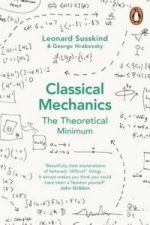
Classical Mechanics
12.12 € -23 % -

Energy and Civilization – A History
17.89 € -14 % -
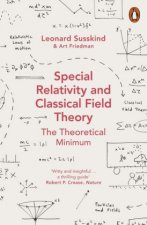
Special Relativity and Classical Field Theory
11.52 € -19 % -

Gravitation
71.38 € -12 % -

Classical Mechanics
110.01 € -
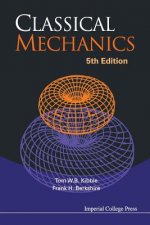
Classical Mechanics (5th Edition)
32.04 € -5 % -
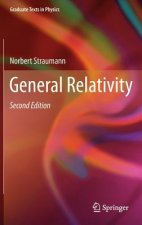
General Relativity
137.81 € -
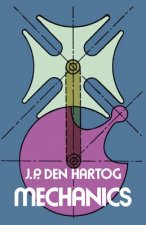
Mechanics
15.87 € -23 % -

Gravitation
126.79 € -

On Gravity
21.22 € -
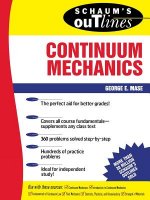
Schaum's Outline of Continuum Mechanics
34.47 € -
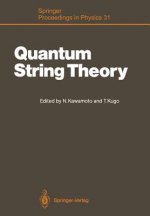
Quantum String Theory
137.81 € -
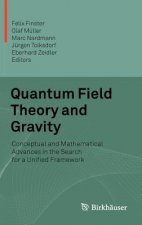
Quantum Field Theory and Gravity
69.96 € -
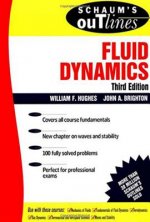
Schaum's Outline of Fluid Dynamics
31.94 € -12 % -
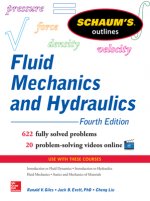
Schaum's Outline of Fluid Mechanics and Hydraulics
33.36 € -

Thing Explainer
22.03 € -21 % -

Classical Mechanics
94.23 € -
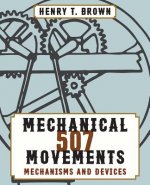
507 Mechanical Movements
20.82 € -

Introduction to Black Hole Physics
66.53 € -
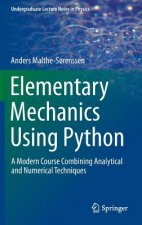
Elementary Mechanics Using Python
57.93 € -

Concert Halls and Opera Houses
224.27 € -

Concert Halls by Nagata Acoustics
104.75 € -
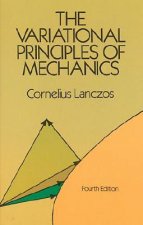
Variational Principles of Mechanics
26.18 € -15 % -

Sonic Wonderland
14.25 € -23 % -
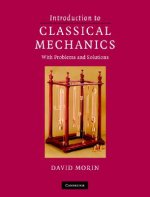
Introduction to Classical Mechanics
82.40 € -
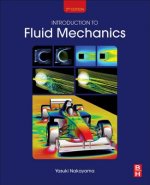
Introduction to Fluid Mechanics
132.56 € -

1800 Mechanical Movements, Devices and Appliances (Dover Science Books) Enlarged 16th Edition
34.37 € -
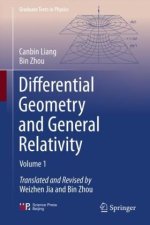
Differential Geometry and General Relativity
110.92 € -

Beyond Einstein's Unified Field
20.01 € -

Principles of Marine Bioacoustics
199.60 € -
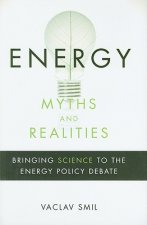
Energy Myths and Realities
60.26 € -
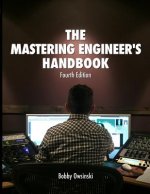
4th Edition Mastering Engineer's Handbook
26.18 € -14 % -
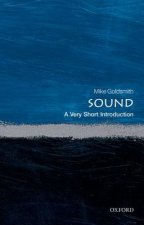
Sound: A Very Short Introduction
10 € -23 % -
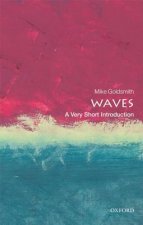
Waves: A Very Short Introduction
12.02 € -15 % -
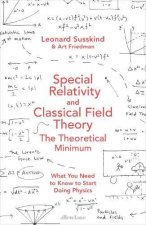
Special Relativity and Classical Field Theory
31.44 € -10 % -
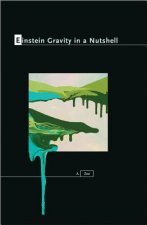
Einstein Gravity in a Nutshell
108.09 € -12 % -

Power Density
35.89 € -12 % -
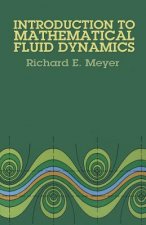
Introduction to Mathematical Fluid Dynamics
12.83 € -2 % -
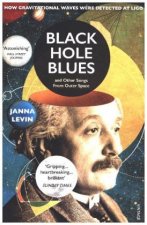
Black Hole Blues and Other Songs from Outer Space
12.12 € -23 % -
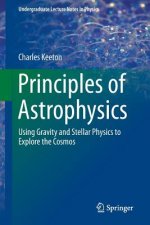
Principles of Astrophysics
83.62 € -7 % -

Turbulent Flows
98.58 € -
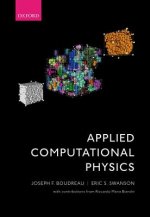
Applied Computational Physics
98.38 € -

Ways of Hearing
19.91 € -5 % -
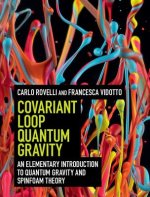
Covariant Loop Quantum Gravity
80.89 € -
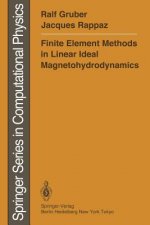
Finite Element Methods in Linear Ideal Magnetohydrodynamics
69.96 € -
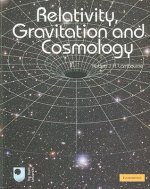
Relativity, Gravitation and Cosmology
96.76 € -

Anti-Gravity & the Unified Field
16.07 € -
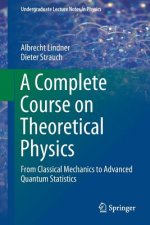
Complete Course on Theoretical Physics
85.54 € -5 % -

Feynman Lectures on Gravitation
77.55 €
Osobný odber Bratislava a 2642 dalších
Copyright ©2008-24 najlacnejsie-knihy.sk Všetky práva vyhradenéSúkromieCookies


 21 miliónov titulov
21 miliónov titulov Vrátenie do mesiaca
Vrátenie do mesiaca 02/210 210 99 (8-15.30h)
02/210 210 99 (8-15.30h)